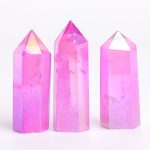Red stone minerals have captivated humans for centuries, not only for their striking hues but also for their versatility in various industries. Here we delve into the world of these fascinating minerals, exploring their composition, applications, and economic significance.

Composition and Mineralogy
Red stone minerals derive their distinctive coloration from iron oxide impurities, primarily in the form of hematite (Fe2O3). This iron oxide content ranges from 5% to 30%, contributing to the mineral’s hardness and durability. Red stone minerals belong to various mineral groups, including silicates, carbonates, and oxides.
Types and Varieties
The term “red stone minerals” encompasses a wide range of species, each with unique characteristics and applications. Some of the most common types include:
- Sandstone: A sedimentary rock composed primarily of sand grains cemented together by iron oxide and clay minerals.
- Limestone: A sedimentary rock formed from the accumulation of calcium carbonate, often containing varying amounts of iron oxide.
- Jasper: A microcrystalline quartz containing impurities of hematite, resulting in its bright red color.
- Granite: An igneous rock composed of quartz, feldspar, and mica, often containing iron oxides that contribute to its reddish hue.
- Garnet: A group of silicate minerals known for their deep red to orange coloration due to the presence of iron and manganese.
Industrial Applications
Red stone minerals find use in a wide array of industrial applications due to their unique properties and abundance.
- Construction: The durability and aesthetic appeal of red stone minerals make them ideal for use in building facades, paving, and other architectural elements.
- Mining: Red stone minerals are often used as iron ore for steel production due to their high iron oxide content.
- Abrasives: The hardness of red stone minerals is leveraged in various abrasives, such as grinding wheels and polishing compounds.
- Ceramics: Iron oxides added to ceramic glazes impart red coloration and enhance strength and durability.
- Jewelry: Garnets are widely used in jewelry for their deep red hue and brilliance.
Economic Significance
The global market for red stone minerals is vast, with the United States, China, and India being major producers and consumers. The estimated global market size for red sandstone alone was valued at $4.2 billion in 2022 and is projected to grow significantly in the coming years. This growth is attributed to the increasing demand for natural stone in construction and interior design.
Emerging Applications
Ongoing research and advancements in nanotechnology have opened up new avenues for the utilization of red stone minerals.
- Bioimaging: Iron oxide nanoparticles derived from red stone minerals show promise as contrast agents in medical imaging techniques.
- Catalysis: Red stone minerals can be used as catalysts in various chemical reactions, potentially leading to energy-efficient and environmentally friendly processes.
- Energy Storage: Iron oxide materials obtained from red stone minerals have shown potential for use in batteries and other energy storage devices.
Tables
Table 1: Chemical Composition of Common Red Stone Minerals
| Mineral | Chemical Formula | Iron Oxide Content (%) |
|---|---|---|
| Hematite | Fe2O3 | 100 |
| Sandstone | SiO2 | 5-15 |
| Limestone | CaCO3 | 5-10 |
| Jasper | SiO2 | 5-30 |
| Garnet | Fe3Al2(SiO4)3 | 15-25 |
Table 2: Industrial Applications of Red Stone Minerals
| Application | Red Stone Mineral | Property Utilized |
|---|---|---|
| Building Facades | Sandstone, Limestone, Granite | Durability, Aesthetic Appeal |
| Iron Ore | Hematite | High Iron Oxide Content |
| Abrasives | Jasper | Hardness |
| Ceramic Glazes | Iron Oxide | Coloration, Strength |
| Jewelry | Garnet | Deep Red Hue, Brilliance |
Table 3: Global Market Value of Red Stone Minerals
| Mineral | Market Value (2022) |
|---|---|
| Red Sandstone | $4.2 Billion |
| Limestone | $1.5 Trillion |
| Granite | $400 Billion |
| Hematite (Iron Ore) | $160 Billion |
| Garnet | $1.2 Billion |
Table 4: Emerging Applications of Red Stone Minerals
| Application | Red Stone Mineral | Potential Benefits |
|---|---|---|
| Bioimaging | Iron Oxide Nanoparticles | Medical Imaging Contrast Agents |
| Catalysis | Red Stone Minerals | Energy-Efficient Processes |
| Energy Storage | Iron Oxide Materials | Batteries and Other Storage Devices |
| Textile Additives | Nanosized Red Stone Minerals | Improved Thermal Insulation, Coloration |
Strategies for Effective Usage
- Carefully select the appropriate red stone mineral for the intended application, considering factors such as hardness, durability, and iron oxide content.
- Ensure proper extraction and processing methods to maintain the quality and integrity of the mineral.
- Utilize innovative technologies and research to explore novel applications and enhance the value of red stone minerals.
- Collaborate with experts and researchers to develop sustainable and environmentally friendly solutions.
FAQs
-
What is the most abundant red stone mineral?
Limestone is the most abundant red stone mineral, accounting for over 10% of the Earth’s crust. -
Are all red stone minerals magnetic?
Yes, due to their iron oxide content, most red stone minerals exhibit magnetic properties. -
Can red stone minerals be used as pigments?
Yes, red stone minerals, particularly hematite and ochre, have been used as pigments for thousands of years. -
What is a potential emerging application for red stone minerals?
Red stone minerals show promise in the field of energy storage, as they can be used to manufacture high-performance batteries. -
How can we ensure sustainable extraction of red stone minerals?
Sustainable extraction practices include minimizing environmental impact, restoring mining sites, and following responsible waste management procedures. -
Are red stone minerals radioactive?
Only in trace amounts. The amount of radioactivity is negligible and poses no significant health risks. -
What is the difference between red sandstone and red granite?
Red sandstone is a sedimentary rock composed of sand grains, while red granite is an igneous rock composed of quartz, feldspar, and mica. -
Are there any concerns regarding the durability of red stone minerals in construction?
While red stone minerals are durable, they can be susceptible to weathering and erosion over time. Proper maintenance and protection are crucial to ensure long-term durability.




























